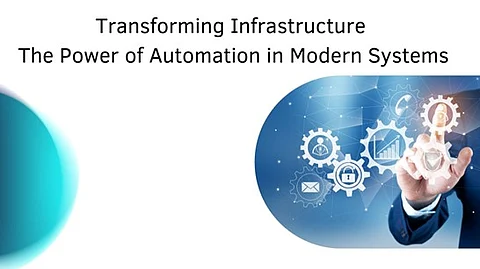

In today's fast-paced technological landscape, automation is driving innovation across industries, transforming how infrastructure is managed and optimized. Kiran Kumar Suram's recent work explores the pivotal role of automation in streamlining processes and enhancing efficiency. A recognized expert in the field, he provides valuable insights into this transformative trend, showcasing its potential to revolutionize operations, reduce costs, and drive sustainable growth, making it a cornerstone of modern organizational strategies.
Manual processes are being replaced by automation that ensures speed, accuracy, and reliability. Organizations reduce human error and maximize the consistency of operations by automating access management, system monitoring, and vulnerability detection.
Automation provides high real-time response, enabling organisations to quickly know and act to problems that might arise. Such a trend will set new marks for efficiency and dependability of infrastructure management.
Automation gives the much-needed decisive edge to scale infrastructure for meeting growing organizational demands. Traditional systems generally give way to large bottlenecks in times of rapid growth and are unable to sustain such performance and efficiency. Automated frameworks are, by their nature, adaptable and will grow linearly without causing disruptions.
Automation allows for infrastructure to be kept in line with organizational needs because it ensures fast integration of new resources, systems, and users. The automation process also makes sure that more workloads are handled without much risk of downtime or performance lags. Further, such systems streamline resource allocation, workload balancing, and monitoring, all of which occur in real time.
As a result, automation emerges as the cornerstone of sustainable expansion, empowering organizations to scale with confidence, enhance operational efficiency, and maintain a competitive edge in an increasingly dynamic business environment.
Not only has automation stepped out of internal operations, but it now forms a majority part of the enhancement of the end-user experience. By virtue of its advanced features such as adaptive authentication and predictive analytics, automated systems create interaction that is both secure, intuitive, and efficient. Adaptive authentication adaptably adjusts the security measures based upon a user's behavior, providing proper protection without creating too much complexity. Predictive analytics empowers the user experience by identifying the needs and rendering appropriate solutions in real time.
These innovations lower friction by eliminating repetitive steps in processes and improving usability. Because of this, automation bridges a gap between hard security protocols and user-friendly interfaces, striking that optimal balance and creating trust as well as satisfaction. By favoring both the security and user-friendliness of automated systems, they serve not only current expectations but provide a basis for long-term involvement and loyalty with an increasingly digitized world.
Artificial Intelligence (AI) has significantly amplified the potential of automation by introducing intelligence and adaptability to routine tasks. Unlike traditional automation, which focuses on predefined actions, AI-driven systems leverage data analysis, predictive modeling, and machine learning to automate decision-making with precision and speed. This enables processes to become not only faster and more efficient but also increasingly accurate and context-aware.
AI-powered automation changes the game for critical areas, such as optimizing usage of resources dynamically and managing threats proactively by identifying them before they cause damage. The intelligent systems will learn and change with conditions in order to ensure that they continue to be relevant and effective with time. AI integration can therefore help organizations develop smarter, more resilient infrastructures that can tackle complex challenges while positioning themselves for sustained success over time in the ever-changing landscape.
As automation moves forward, emerging technologies like blockchain, quantum computing, and zero-trust frameworks redefine its potential; the scope then expands. Blockchain enhances transparency and security, ensuring trust in automated processes, whereas quantum computing accelerates data analysis and problem-solving capabilities, unlocking further heights of efficiency. The zero-trust frameworks add an indispensable layer of security, hence safeguarding the systems used for automation against the growing menace of cyber threats.
Adopting these advancements is crucial for organizations seeking to stay competitive in a rapidly changing landscape. These technologies amplify the power of automation, enabling more robust decision-making, seamless integration, and heightened adaptability. By embracing these innovations, businesses can not only optimize their operations but also ensure resilience and agility, positioning themselves to thrive in an environment defined by constant change and heightened complexity.
In conclusion, Kiran Kumar Suram's work highlights the transformative potential of automation in reshaping infrastructure management. Automating processes and integrating intelligent technologies empower organizations to achieve unmatched efficiency, reliability, and scalability. This approach is not merely a solution for current challenges but a strategic foundation for long-term success. By adopting these advancements, forward-thinking organizations position themselves as leaders, driving innovation and building resilient, future-ready systems in an increasingly dynamic and competitive environment.
